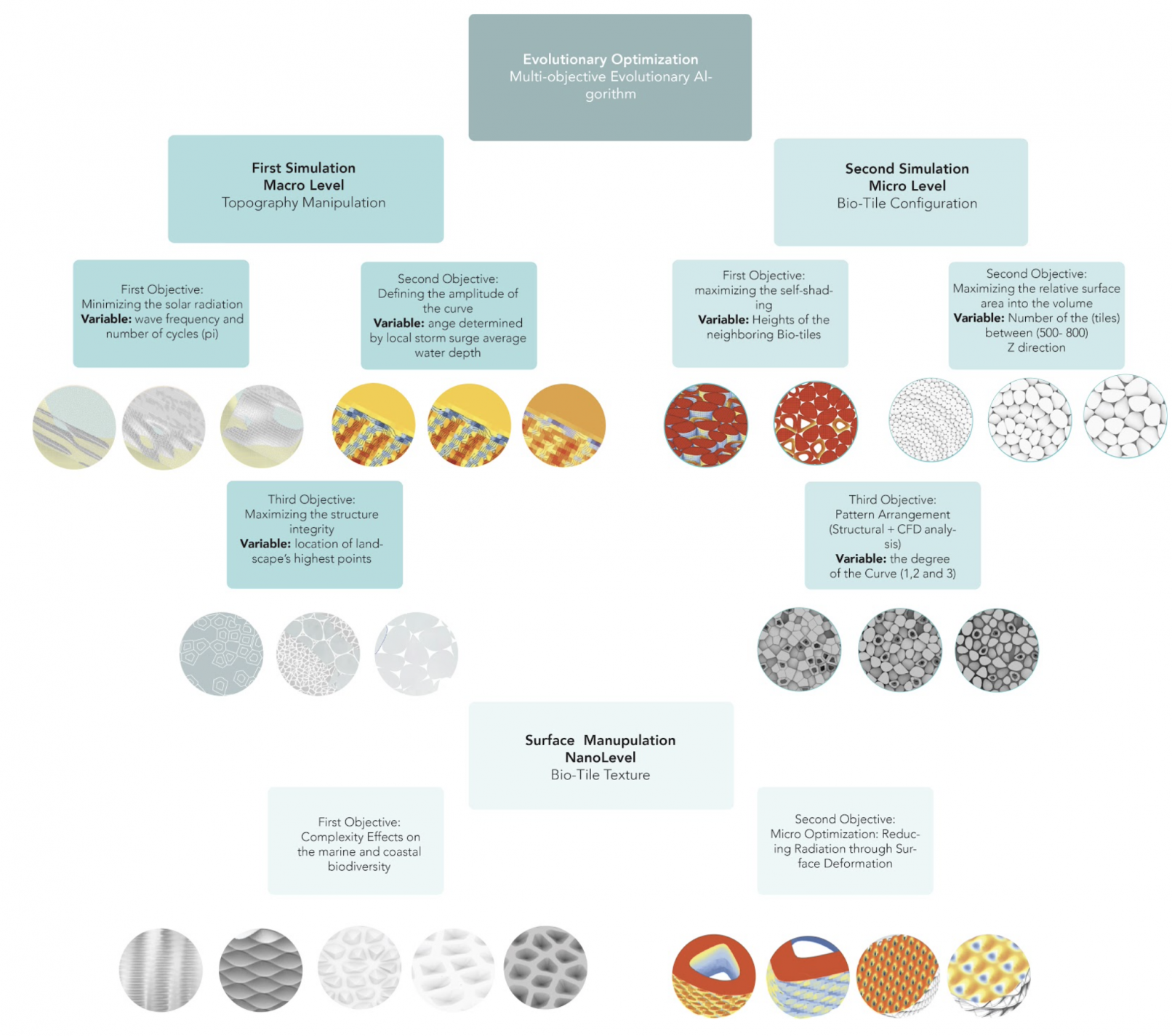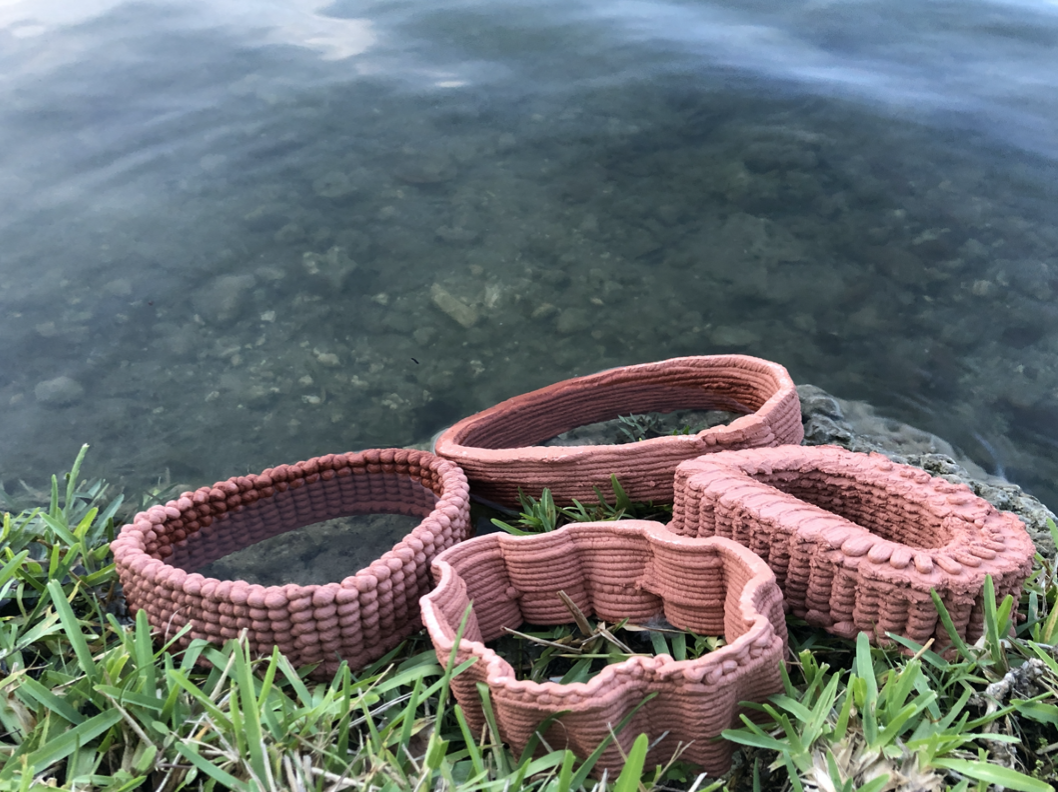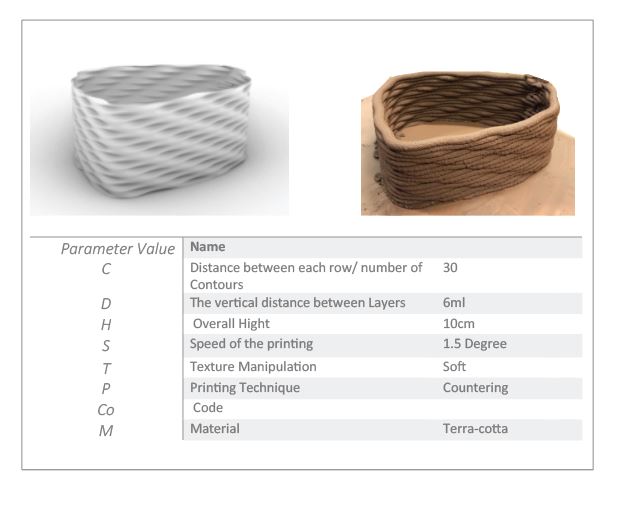Phase II: Bio-tile, A Hybrid Living Shoreline
NSF CREST Center for Aquatic Chemistry and Environment
Florida International University |College of Architecture + The Arts
Several prototypes of the Bio-Tile were developed for testing. The prototypes resulted in a composition of three typologies produced with different manufacturing methods utilizing an industrial robotic arm. These included:1) a solid typology to withstand water and wind force, 2) a donut-shaped typology in which the center serves as a pod to house seeds for mangrove restoration, and 3) an artificial rockpool typology where the tile is positioned to collect sediment runoff. All three typologies have surface manipulation which are generated by an algorithmic process. The surface deformations are developed based on data from water turbidity and lighting exposure which are significant factors in the conditioning of habitats that support marine wildlife. Different strategies for surface manipulation were applied to increase the abundance of specific intertidal flora and fauna.
To test the performance of the Bio-tiles, we have placed the prototypes along a shoreline affected by erosion and deforestation and will monitor them for one year. We are testing Bio-tiles packs that include all three performative configurations. The solid configuration will be analyzed to evaluate the impacts of water and wind forces on the structural integrity of the tile. The donut-shape configuration will be evaluated based on the health of the planted mangrove seeds and alterations in the biodiversity of the shoreline. The rockpool configuration will be evaluated by measuring the amount of sediment accumulated in the center of the Bio-tiles. The composition as a whole will be evaluated for its performance against wind and water forces as well as their overall effect on the existing ecosystem.
Collaborated student: Maria D Perez













